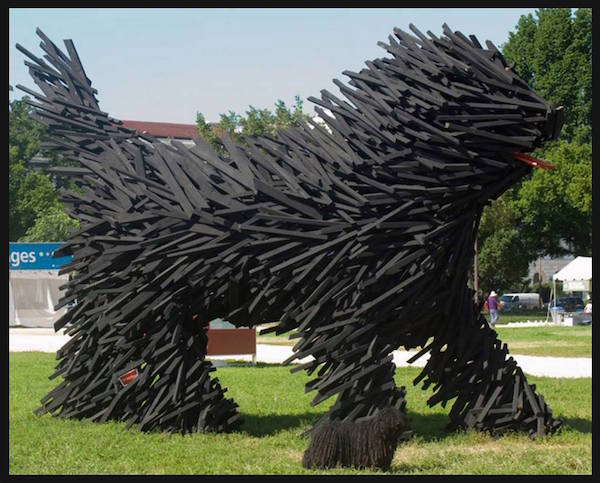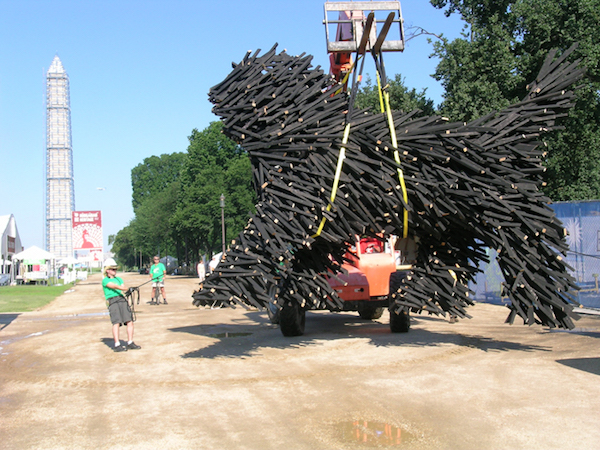
Back in 2013, Hungarian sculptor, Gábor Miklós Szőke, created a Puli sculpture for the Hungarian Heritage: Roots to Revival program Smithsonian Folklife Festival. Known for his monumental installations reaching as high as fourteen feet, Szőke makes the free standing pieces by screwing recycled wooden slats of different sizes together (in the photo at the left, note the real life Puli standing in the foreground).
In an interview, Szőke said, “The main inspiration is animals, but even within this I have a personal mythology about a dog, which currently is my dog, Dante. My art is about him, which is a museum topic, or an art topic in a stricter sense. But otherwise, it’s mostly about animals and everything that goes with it—instincts, dynamism, grand dimensions, and spontaneity.”
For the Puli, Szőke didn’t follow a set plan; he built the sculpture like he builds all his projects: A basic idea developed through intuition and imagination. Though we’ve mentioned Szőke and this Puli before, we’d not seen a photograph of the piece being moved until today:
Neither had we seen this interview before:
Though he graduated only in 2010 from the Hungarian University of Fine Arts, Szőke has been extremely prolific: In addition to the creation and installation of his pieces, he’s also a world-record holder. Two of his sculptures, the Horse of Samorin Hippo Arena and the FTC Eagle are the biggest artworks of their kind in the world.

